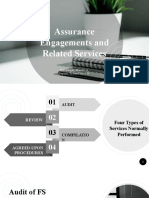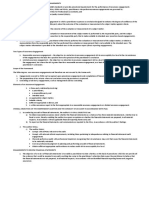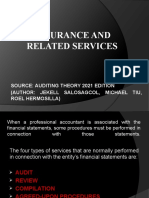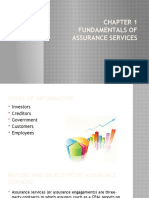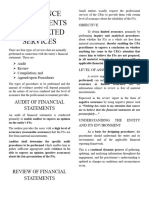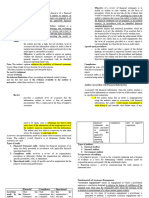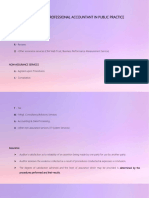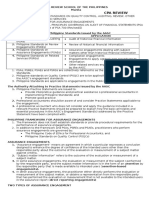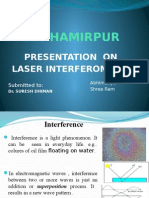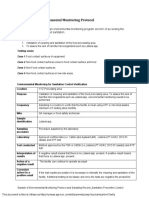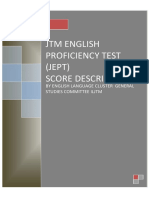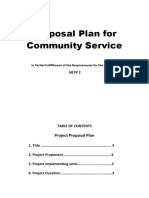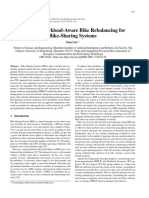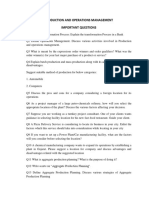0% found this document useful (0 votes)
113 views6 pagesChapter 12
Chapter 12 discusses assurance engagements and related services for professional accountants, detailing four primary types: audit, review, compilation, and agreed-upon procedures. It highlights the levels of assurance provided by each service, with audits offering reasonable assurance and compilations providing no assurance. The chapter also covers the criteria for assurance engagements, the importance of evidence, and the auditor's responsibilities regarding prospective financial information.
Uploaded by
Ivy Jean AunzoCopyright
© © All Rights Reserved
We take content rights seriously. If you suspect this is your content, claim it here.
Available Formats
Download as DOCX, PDF, TXT or read online on Scribd
0% found this document useful (0 votes)
113 views6 pagesChapter 12
Chapter 12 discusses assurance engagements and related services for professional accountants, detailing four primary types: audit, review, compilation, and agreed-upon procedures. It highlights the levels of assurance provided by each service, with audits offering reasonable assurance and compilations providing no assurance. The chapter also covers the criteria for assurance engagements, the importance of evidence, and the auditor's responsibilities regarding prospective financial information.
Uploaded by
Ivy Jean AunzoCopyright
© © All Rights Reserved
We take content rights seriously. If you suspect this is your content, claim it here.
Available Formats
Download as DOCX, PDF, TXT or read online on Scribd
/ 6
